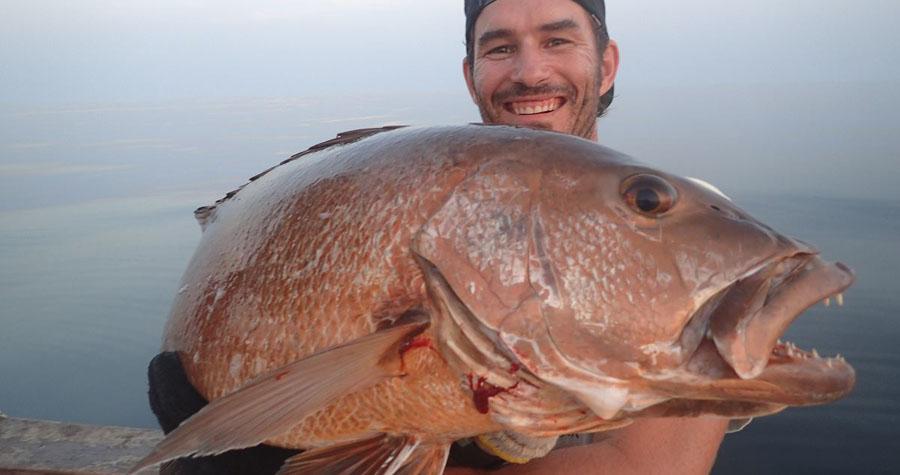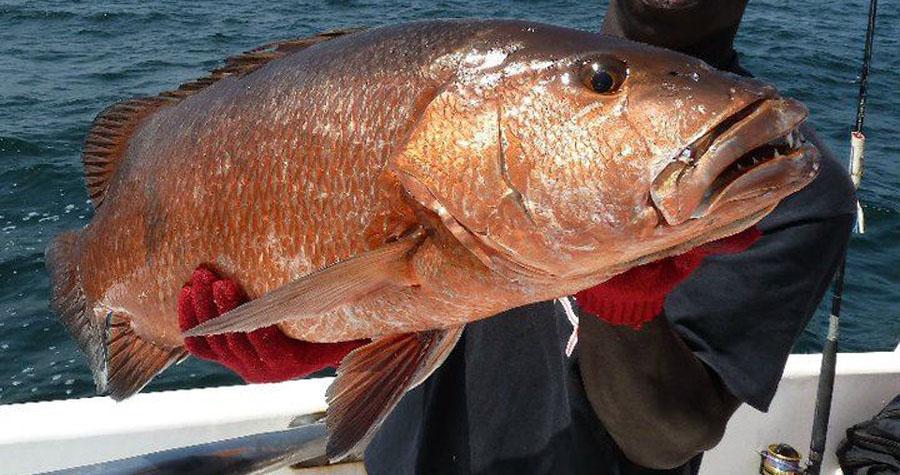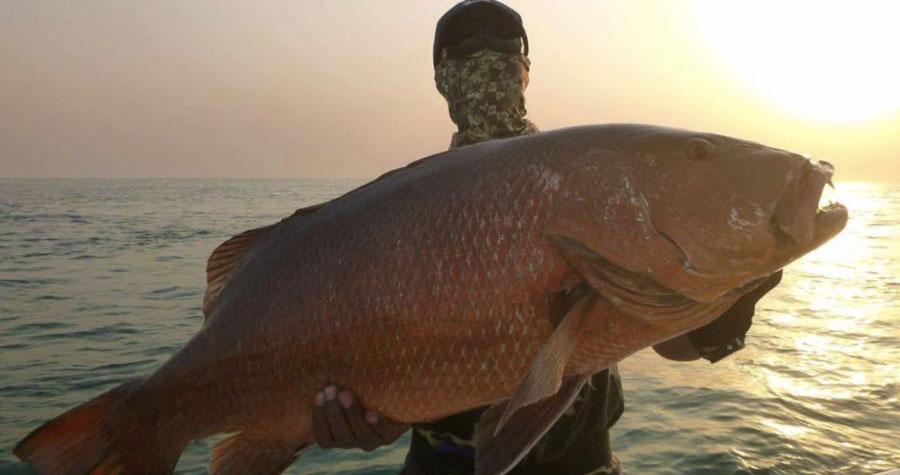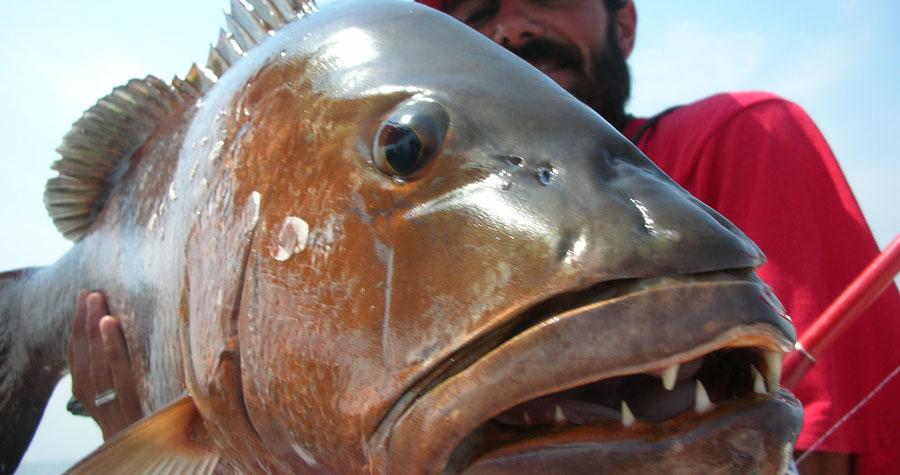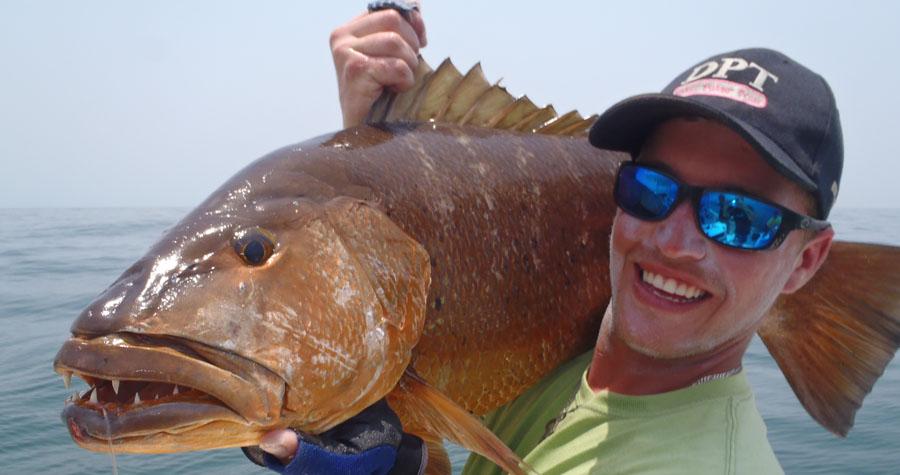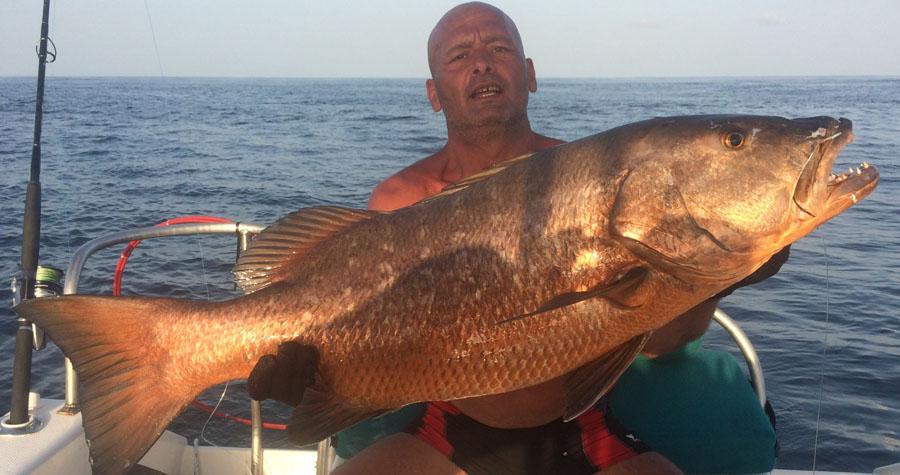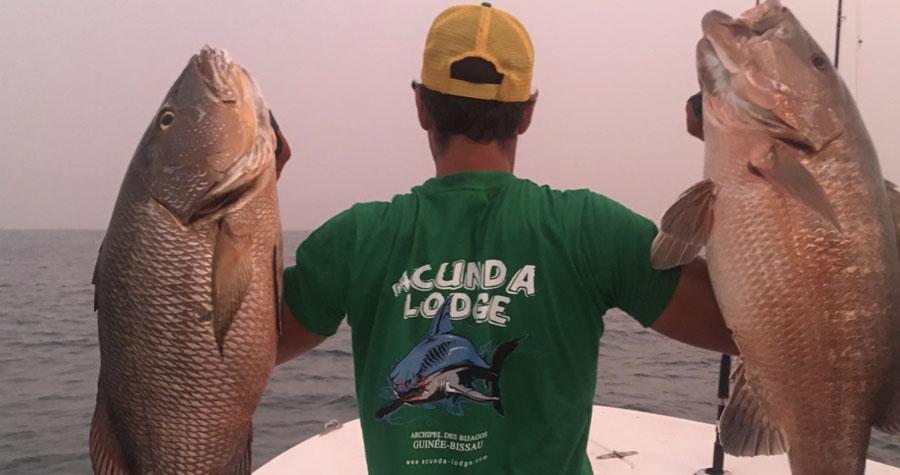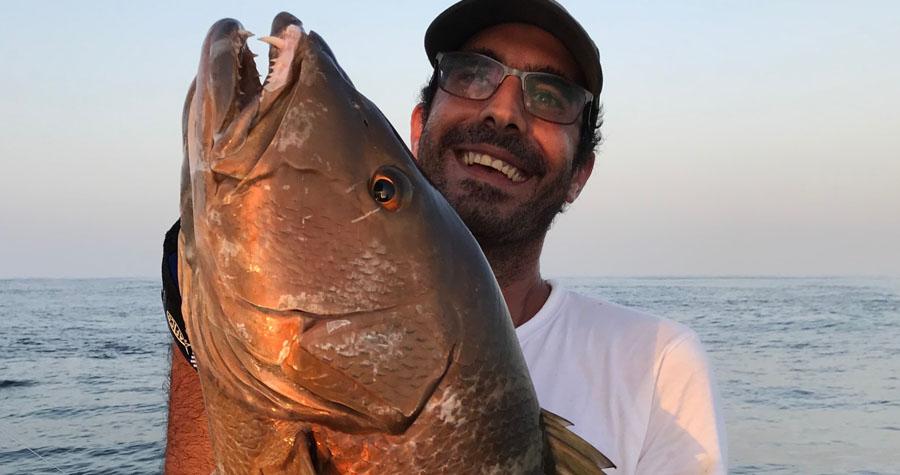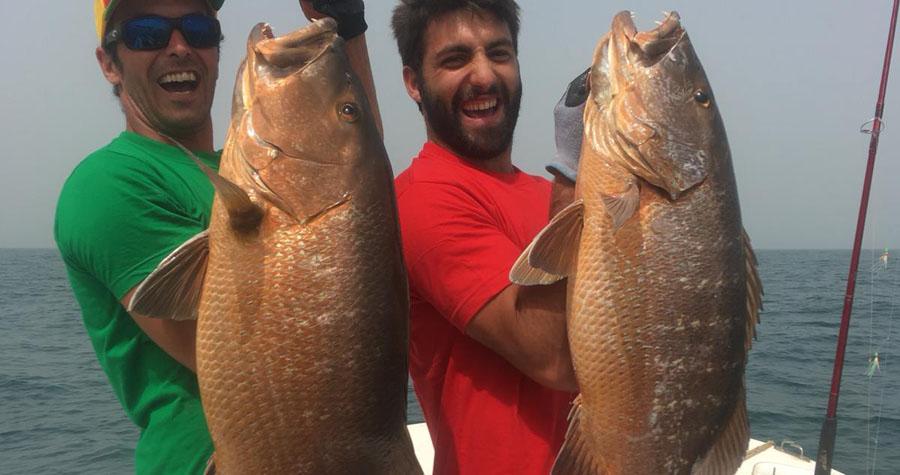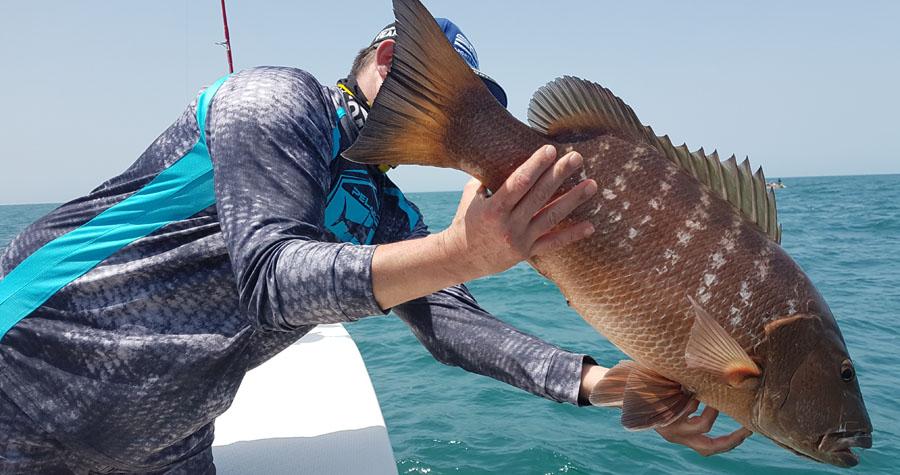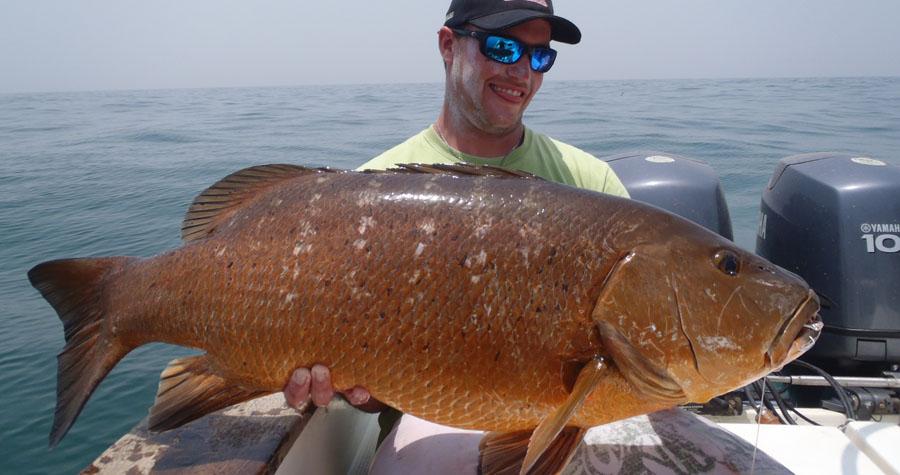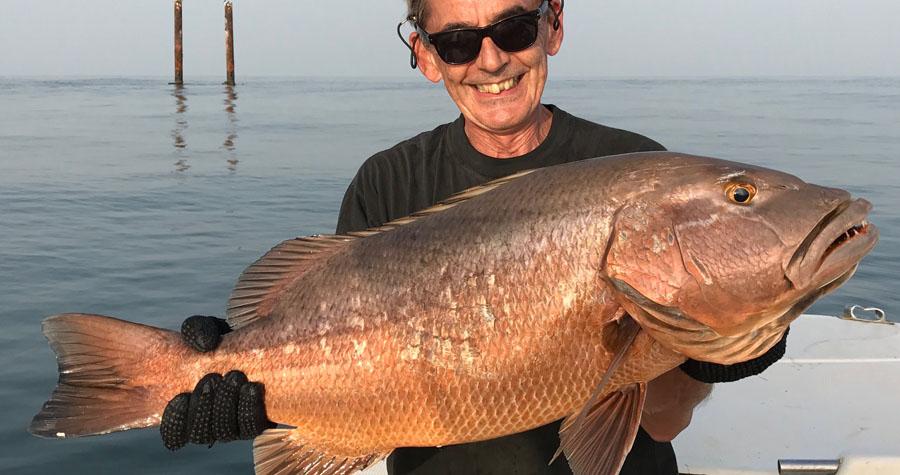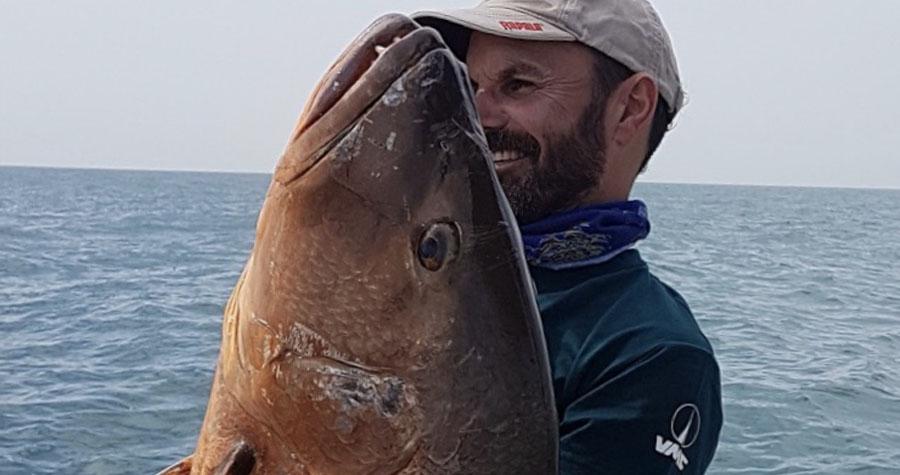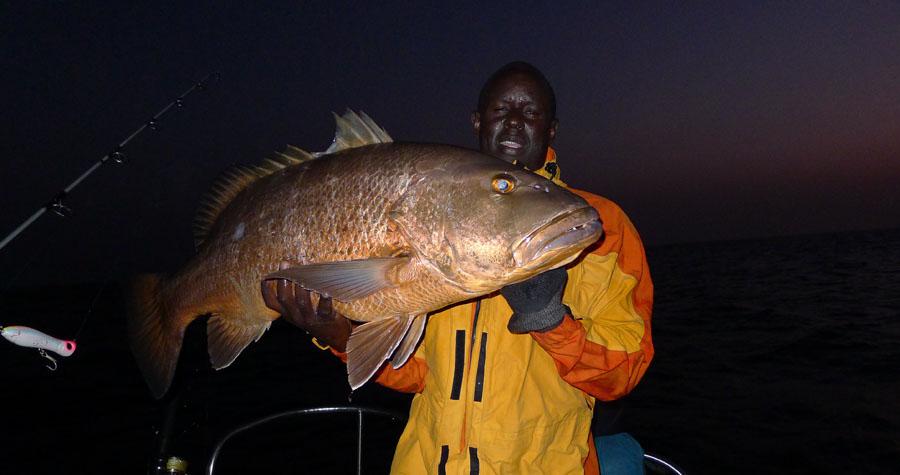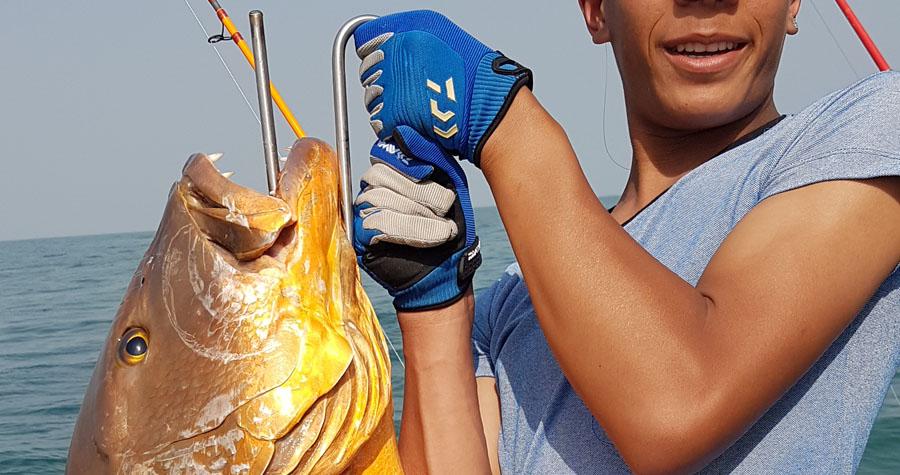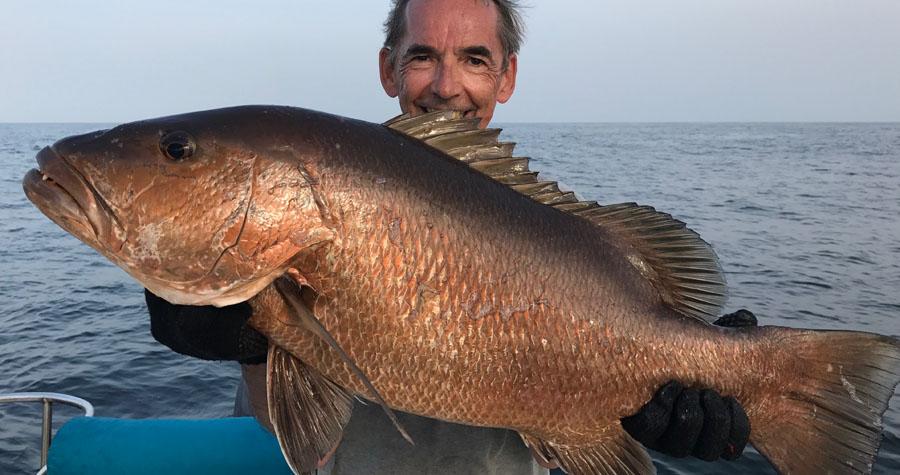Fishing for CUBERA SNAPPER / DJABBAR
We are now in the trophy category. The Djabbar or cubera snappers are famous for making all exotic anglers run, from Gabon to Panama passing off Guinea Bissau, one taste of it is all it takes to keep coming back for more. It is THE opponent to subdue (or try to) at all costs.
The fish is intelligent, very intelligent, extremely powerful over a short distance and it puts up one hell of a fight while unleashing its full power to reach its hole or refuge in order to snap the line – which it manages to do at least 9 times out of 10. It is a short and explosive fight, lost or won within 8/10 seconds.
This fishing demands extreme concentration as it’s all over in a matter of seconds. I personally prefer overhead reels given that it often happens that one does not even have time to close the bail arm that the fish is already in a hole … unless one fishes with a closed bail arm and rod held high (to lower instantly after a strike and restrain, and what will be, will be…).
The equipment is thoroughly put to the test. One must be ideally equipped with a short and powerful rod such as a 200/300 g jigging rod and an 18000 reel spooled with 80 lb braid minimum, 140 lb leader (obviously more is needed, but the intelligent fish will no longer eat the bait). For that matter, one will break off anyway (friction with the gunwale boards) but with the feeling to have more or less done what was needed.
The cubera snapper has a preference for the most rugged terrain, shallow wrecks and rocky outcrops: fights in shallow waters allow it to take refuge in a hole very quickly, not comparable to the “red ones” caught in the estuaries on the sand in Gabon or even those caught in the open water in Panama. Here, when it has eaten it’s almost always too late and we, thrill seekers, go back anyway – after redoing a rig while grumbling, of course, and to the greatest pleasure of your local fishing tackle retailer!
It is most often at sunset that the devil roams… There is a close relationship between the speed of the current = tide/coefficient/sunset which makes it possible to optimise this fishing …

